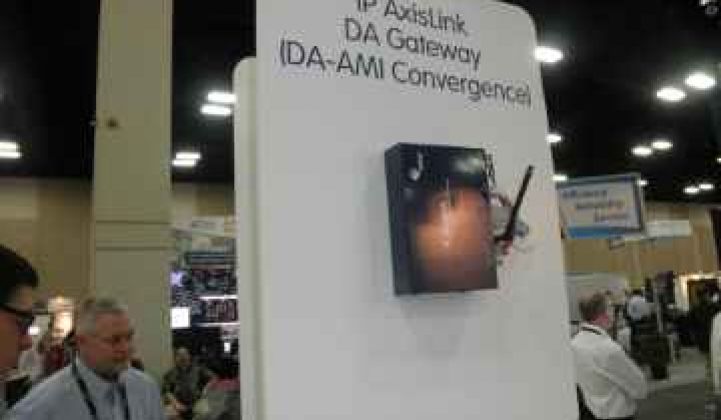Many people working in smart grid argue that the smart meter, which got so much attention (and stimulus funds) in recent years, is just an endpoint. Real smart grid is on the grid itself, providing two-way communication and more efficient power flow across the distribution system.
But what if the meter can help with some of that? Following in the footsteps of Dominion Virginia Power, Entergy is using its Elster smart meter system to understand, and adjust, voltage conditions at the end of the line.
Entergy has been testing two residential feeders, one with about 70 meters on the end and the other with about 30. The utility is seeing a consistent 4 percent to 6 percent savings in energy consumed.
The project, which also involves ABB and Survalent Technology, will next move into a controlled pilot to figure out the business case to bring to the public utility commission. If all goes well, it could then be expanded to many feeders throughout Entergy’s territory.
That’s a big if, however. Voltage reduction seems like a win-win. A recent GTM Research report, Distribution Automation: 2012-2016: Technologies and Strategies for Grid Optimization, noted that “VVO is poised for an explosion of acceptance among utilities looking to reduce peak load and defer capital expenditures through CVR or increase control of voltage and reactive power levels on the distribution grid.”
However, that’s only if the utilities are incentivized to shave peak load through decoupling or other methods that ensure that the utility won’t be losing money if they sell less power. “The challenge is to make sure we have the right regulatory recovery mechanism,” said Paul D. Olivier, director of Smart Grid at Entergy.
For investor-owned utilities that already have something in place that allows them to increase efficiency without sacrificing profits (or for munis and co-ops, that are seeking the lowest rates for their customers), David Green of Elster argued that voltage conservation and transformer management using advanced metering can boost the business case by squeezing more value out of the system. “Beyond radial feeders, networked systems will also provide a quick payback for utilities interested in VVO, as they consist of shorter, heavily loaded lines,”wrote Ben Kellison, author of GTM Research’s latest DA report.
To reduce the voltage, Entergy is adjusting capacitor banks and adjusting setting for load tap changers at the substation. “Some of the secret sauce in the software is creating optimal settings so you’re not creating feedback loops,” said Olivier.
To support the findings of the Entergy pilot in Louisiana, Elster formed the Smart Grid Voltage Conservation Alliance in August 2011. If the pilot is successful, Elster hopes to expand it to other utilities. For now, the alliance is comprised of just the companies involved in the Entergy pilot -- hardly an industry consortium so far.
For ABB, which has a clear stake in conservation voltage reduction hardware, the project has allowed the company to learn more about voltage across the feeders and down the end point, according to Jon Rennie, vice president and general manager for ABB Distribution Components. Although metering can provide insight into what’s happening down the feeder, it can’t provide the switching that’s needed back at the substation or on the line to reduce the voltage.
In Louisiana, Entergy is adjusting capacitor banks or adjusting settings for load tap changers at the substation to achieve the reduction. The hard part is finding just the right balance so that two devices aren’t fighting each other to get the reduction, Olivier said.
But even more difficult than achieving the right balance using the AMI system and just the right devices is getting regulators on board. “Our challenge is to get CVR to be included in energy efficiency for recovering lost revenue,” Olivier said. “The good news is, I don’t think these are insurmountable hurdles.”



